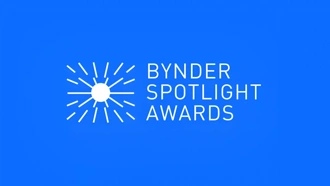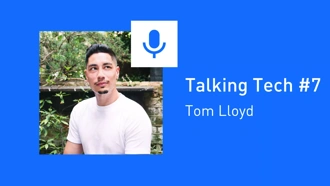Navigate change management
These days, every organization must become an agent for change to find success, and this is also true when it comes to adopting new initiatives and projects in your organization. As the renowned management consultant Peter Drucker noted in his acclaimed book, Management:
Instead of seeing change as a threat, people will come to consider it as an opportunity.
Put simply, change management is the process of communicating, onboarding, and implementing changes in an organization from a current state to an improved future state. It's an idea that should always be considered when launching and supporting digital asset management initiatives, as well as any new project that attempts to improve processes or communications.
Download 15 out-of-the-box templates and whitepapers to get your DAM project going
The degree of success in embracing change has a lot to do with the culture at your company. You must have a culture that welcomes new ideas and opportunities, and if you don’t, then you need to be ready to fight for a more open atmosphere, and encourage a culture of idea and information sharing.
Being unprepared for change at your organization could result in low system adoption, poor reception—or worse—extreme resistance. These negative ramifications can lead to:
- Limited/zero budget for future projects
- Poor credibility with executive leadership
- Not being considered as a candidate to lead large projects in the eyes of colleagues
Identify risks early
No one likes a negative nancy, but it's important to call out risks ahead of new projects—colleagues will thank you later. Besides stating how you will achieve a desired result, it’s also important to talk about potential barriers to reaching those goals. For example: if we want to onboard the whole company to a new tool in July, but over fifty percent of the team is out of office for vacations, that’s obviously a risk worth mentioning. You can then reassess whether a launch really needs to happen that month.
The relationship between marketing and change management
Marketing allows you to get your message out there to the right people, at the right time. It’s about education, advocacy, and good communication—three important concepts for creating awareness and shared understanding. In this handy chart from Erica Toelle, Product Evangelist, you can see that adoption and ownership can increase over time from general awareness all the way to adoption and ownership:
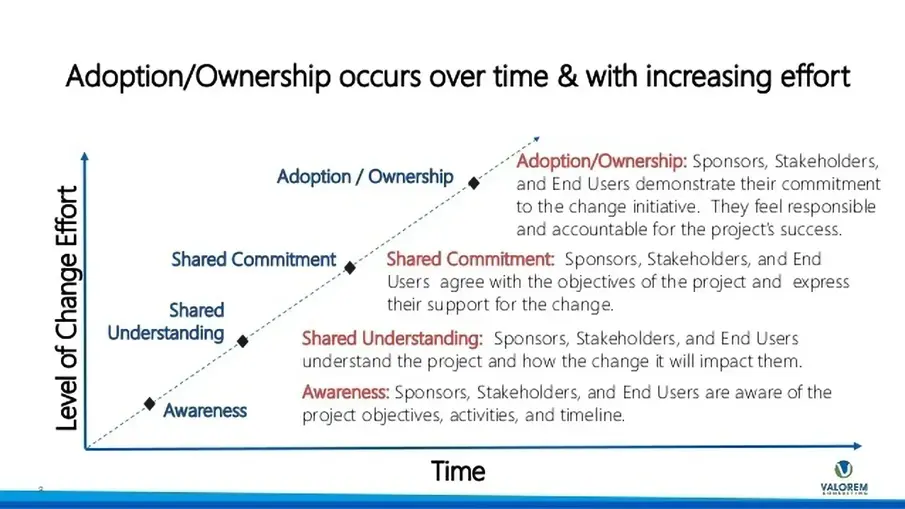
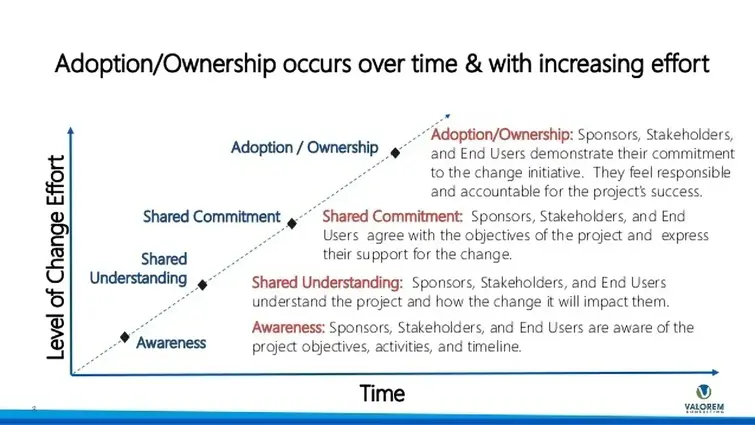
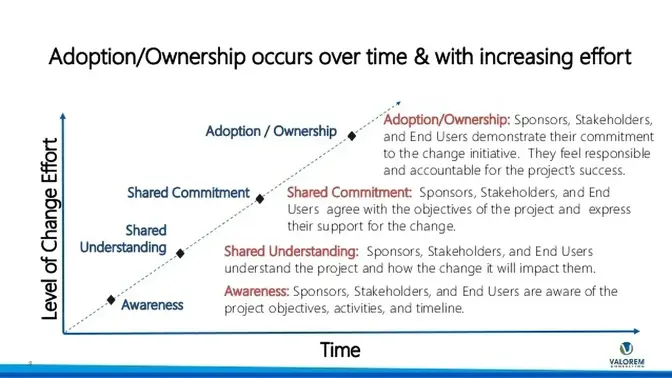
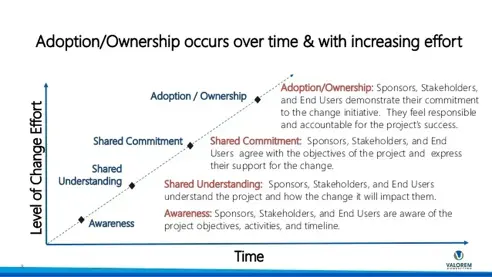
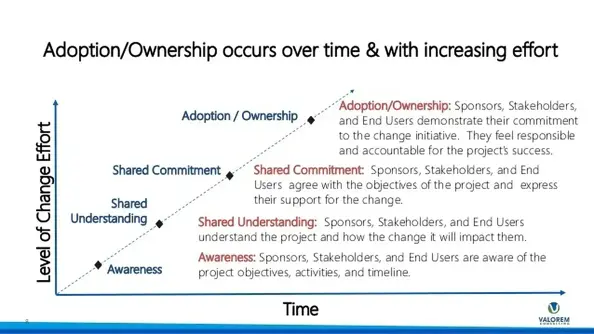
Communicate early and often; champion DAM advocacy
Launching a DAM tool requires you to market your project to a larger group of stakeholders, especially if you are launching across big enterprises. Have you thought about the who, what, when, where and why of your DAM marketing and communications strategy? Have you also thought about how you will approach those tasked with advocacy?
The American Association of School Librarians (AASL) defines advocacy as the “on-going process of building partnerships so that others will act for and with you, turning passive support into educated action for the library program.” Successful DAM requires constant advocacy as well, including PR and marketing to raise awareness and champion successful management of digital asset resources.
Communicating early and often about your upcoming DAM initiative can help drive adoption and awareness for your organization.
Methods of approach
An important concept before launching any marketing activity is to recognize if you will approach your DAM initiative from a grassroots level, or an enterprise level. A grassroots campaign means that you will approach small, targeted groups, while an enterprise-wide approach means you will target the entirety of the organization.
You also need to think about what your goals are for your marketing and how they will impact your DAM initiative (i.e. our goal is to have 40 out of 60 recurring sign-ins/return visits within 30 days of our internal marketing efforts and spend more than 2 minutes per session.) Or perhaps your initial goals are things that can be measured via a post-marketing campaign survey, ensuring:
- People are aware of the DAM initiative
- People know what digital asset management is
- People understand how the project will impact their work
Make DAM go viral in your organization with an omni-channel approach
Communications and marketing go hand in hand. For the greatest effect, try using a variety of mediums to spread awareness and advocate for your organization’s DAM initiative. The following mediums, channels and platforms are great examples to create momentum, buzz and excitement:
- Word-of-mouth marketing (WOMM)
Word-of-mouth marketing is simply spreading the word about something. You talk to people on a daily basis at meetings, events, in the hallway, etc. Use this as an opportunity to mention your initiative.
- Social media (LinkedIn, Twitter, Facebook)
You can also use social media to get in touch with people at your organization about your project. Go to where your audience is—typical examples being LinkedIn, Twitter and Facebook.
- Enterprise networks (Yammer, Jive)
Some organizations have internal enterprise communication networks such as Yammer and Jive that mimic public social networks but are just for the organization itself. If these are widely used in your company, consider this channel as a good place for your messaging as well.
- Intranet
Intranets are web portals that are just for internal use, and can be a great place to provide links, news, or information pertaining to your DAM initiative.
Email marketing is an easy way to send a message to your audience and measure interest through data-driven metrics such as click-through-rates and response rates.
- Chat (online, live, real-time messaging)
You can use real-time messaging to market as well. If your company uses Slack, Hipchat, Telegram, etc., consider what messaging you can place there to educate and drive awareness.
- Print (posters, desk drops, direct mail)
These days, we’re constantly bombarded with digital content. Why not go old school? Use print pieces to do desk drops to announce your DAM initiative, posters in hallways, bulletin boards, or even a direct-mail campaign (which can have surprisingly positive results!)
- Video sizzles
Video content captivates! You can always send video resources via email, but if you’re doing something special like an enterprise-wide DAM launch, consider creating a sizzle video that you can showcase at a live company event to generate buzz.
- Influencer marketing
Influencer marketing allows you to gain a wider reach by having someone who is a champion for DAM who 'influences' your audience. Who at your organization has the ears and eyes of everyone? Find that person and get them influencing!
- Events and meetings
At events and meetings, you're communicating face-to-face with your colleagues—don’t be shy and use this as a way to amplify your reach.
- Contests and Prizes
Incentives are always nice. Raid a supply closet. If possible, use some of your budget to run an internal campaign. Give someone customized company shoes, tickets to an event, or maybe even just some brand swag.
Tips for writing marketing content and communications
- Keep it short and sweet for maximum effect: no one likes a huge wall of text in emails or chat. Refine your messaging and condense it down for all those short attention spans!
- Take stock and get in the moment: what generates your interest online and gets you clicking? Mimic that. What makes you close your computer and listen in a meeting? How do you get people to 'check in' instead of check out?
- Combine new content with the resources you already have: create original content to include in your communications, re-purpose content that already exists for DAM, and combine it in videos, case studies, white papers, blogs, etc. for better-sourced content and greater interaction with your audience
Measuring the effectiveness of marketing
You should be open to exploring different marketing tactics within your organization, but bear in mind that if a particular method doesn’t create a good return on investment, you shouldn't be afraid to jump ship and focus on other more promising methods.
What were the key performance indicators for each marketing/communication strategy, and did you meet them? An example of a KPI would be CTR (click through rate) or response rates for your emails reaching a certain target. Programs like MailChimp are a great way to measure CTR, open rate and response rate.
We hope that these tips and resources inspire you to think critically about how an effective marketing strategy can add value to your DAM initiative, and help you to navigate change management in your organization.
Have questions about change management, communications and digital asset management? We’re always up for a chat!










